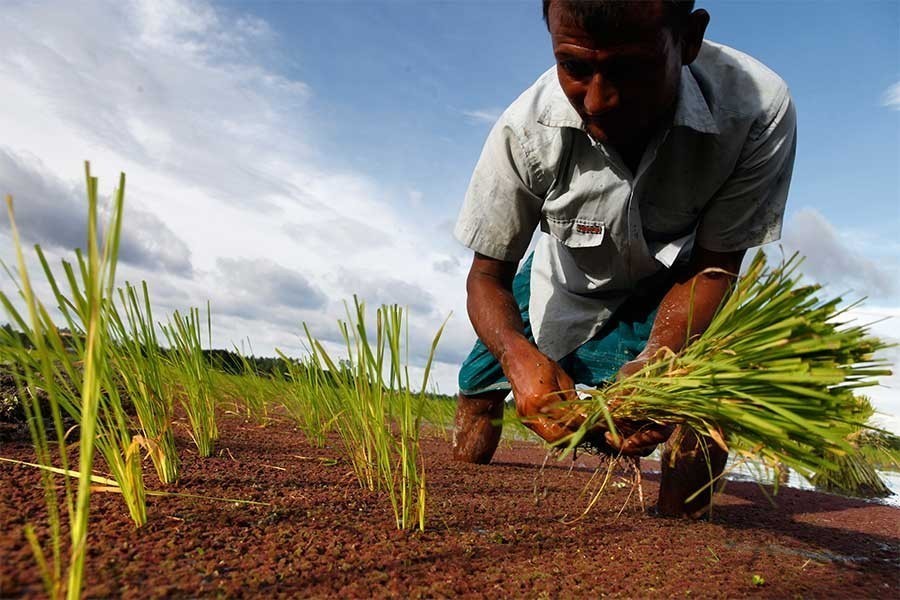That heat shock or heat injury has adversely affected standing paddy on 28,123 hectares of cropland in 36 districts, completely destroying the crop on 10,298 hectares is alarming news. It is concerning on two counts: first, this will result in 0.10 million tonne less than the target boro production; and second, this augurs ill for the country's agriculture in the future. This is because, agricultural scientists believe, it may be the beginning of such a natural phenomenon induced by the climate change. Although heat shock is nothing new in the country, it was a localised phenomenon limited to a few insignificant patches of cropland. This time a storm, known as 'Kalbaishahki' (Nor'wester) in this part of the world, accompanied with scorching heat blew over the 36 districts on April 4 last. It was 'Kalbaishakhi' with a difference in that no rains followed the hot wind and that damaged and destroyed the flowering sheaves of paddy. What is still more worrying is that other crops like maize, peanut, vegetables, sunflower, and banana were also severely affected in the areas under the storm's sway.
In monetary terms, the loss has been estimated at Tk 3.34 billion. The loss suffered may sound not so big in the context that the production target is 20.5 million tonnes of boro but in time of this pandemic, 0.10 million less production is crucial - only more crucial for the farmers who have suffered this unexpected and sudden loss. Fortunately, maize, peanut and sunflower are not widely cultivated and the loss from damage to those crops was even smaller. What is particularly remarkable is that the heat wave wrought havoc with crops that were in the flowering or budding stage. So there is a silver-lining amid the gloom. It is the avoidance of the timing of the Nor'wester for flowering of paddy or other crops.
How can this be done? This is being done continuously in agriculture. Time for paddy ripening or harvesting has been shortened significantly. Early and late cultivation can also do the trick. But the rice research institutes in the country and elsewhere have made miracle possible by developing newer varieties of paddy, vegetables and fruits. The saline-tolerant variety of rice may show the way as well. Temperature beyond 35 degree Celsius is usually considered heat shock for paddies just like heat stroke suffered by human beings. Heat shock simply causes paddy sheaf to dry with no rice grown inside the chaff. Research should be carried on to develop heat-tolerant variety of paddy keeping an eye on the global warming.
Finally, it is heartening to know that the Ministry of Agriculture has made an immediate assessment of the loss suffered by farmers. Under the prime minister's direction, a list of the affected farmers is being prepared for providing support under a stimulus package. Let the list not be botched up like that of the poor for whom a monthly allocation was made under a similar aid package. If the agriculture extension officers are involved with the process, a most authentic list for deserving farmers can be prepared.


